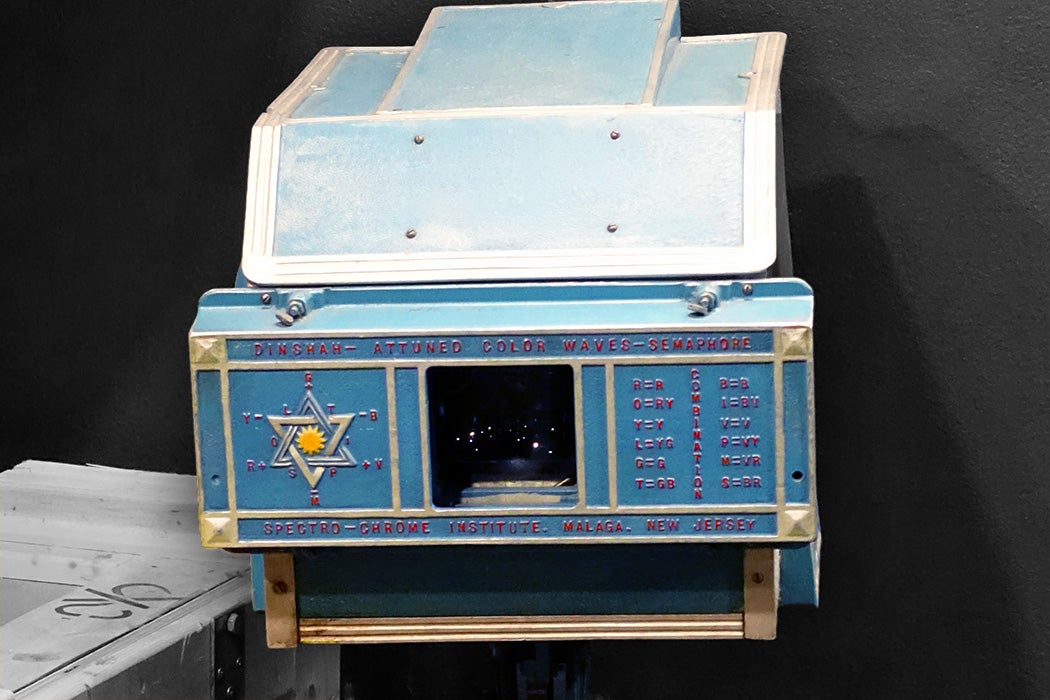In the early twentieth century, much of the American public was enthralled with the wonders of modern science and medicine. But gaining a good understanding of how these fields worked, let alone participating in them, was out of reach to many. Historian Matthew Lavine writes that this helps explain how thousands of people came to believe they could heal themselves and others using a light-emitting device known as the Spectro-Chrome.
Lavine writes that the Spectro-Chrome’s inventor, Dinshah Ghadiali, was born to a Persian family in Bombay in 1873. After studying math, science, and medicine in India, Dinshah traveled to the US in 1896 to give a series of public lectures. At the time, newly discovered x-rays were fascinating the public, and he focused his talks on them. He identified the rays as a manifestation of “the astral light on the physical plane.” Other topics of his lectures over the years that followed included animal magnetism, hypnotism, and the ether.
In 1920, Dinshah introduced the Spectro-Chrome. It consisted of a metal box holding a 1,000-watt bulb that could be fitted with various colored glass filters. Dinshah claimed that every chemical element was attuned to a specific set of light frequencies. When the body’s chemistry was disrupted, resulting in health problems, the use of a particular light could restore balance. For example, orange light stimulated respiration and thyroid function, while magenta wavelengths promoted love and well-being.
Over the decades, at least 10,000 people from all over the US completed ten-day trainings—or, in later years, correspondence courses—and became official affiliates of Dinshah’s Spectro-Chrome Institute. They went on to treat themselves, their family members and friends, and sometimes paying customers. But the appeal for many of them was not just addressing health concerns but also being part of a scientific endeavor.
Most of the technique’s practitioners were working-class, and many were women. Lavine writes that they found in the work the opportunity not just “to benefit from scientific medicine, but also to actively further it through their own practice and research.” One testimonial supposedly written by graduates of a 1933 class in Cleveland called it “a university education compressed into a short two weeks.”
At local meetings, Spectro-Chrome practitioners discussed patients they’d worked with and explored the finer points of the technique. Like university scientists, they valued their colleagues’ skills in working with the device, careful attention to detail, and observational skill.
Weekly Newsletter
In fact, Lavine writes, Dinshah argued that the trouble with allopathic medicine was precisely that it was unscientific—an excessively complex form of medicine focused on orthodoxy found in schools and textbooks rather than hands-on experimentation and observation.
The decline of the Spectro-Chrome began in 1946, when a Brooklyn federal court sentenced Dinshah to five years’ probation and ordered the seizure of the devices. But even this didn’t completely kill the Spectro-Chrome business. Some people trained in the use of the devices continued practicing, and Dinshah retained significant control over the business until his death in 1966.
Support JSTOR Daily! Join our membership program on Patreon today.







